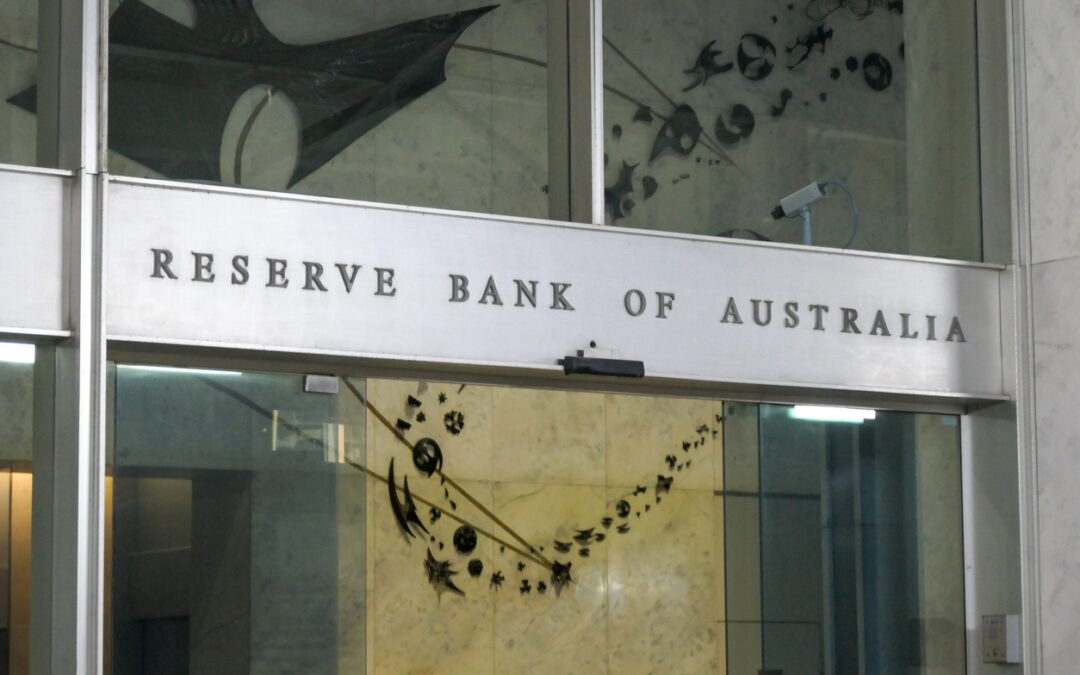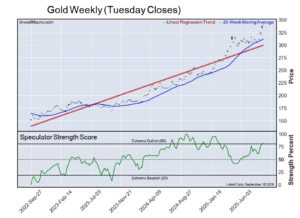Rates unchanged as expected, as Board balances near-term inflation risks with desire to avoid recession.
As expected, the RBA Board left the cash rate target unchanged at 4.35% following its May meeting but strengthened its rhetoric around upside inflation risks. The statement highlighted that inflation is declining, but more slowly than expected. Services inflation is moderating only gradually, driven by a labour market that the RBA now assesses to be tighter than previously thought. It is noteworthy that the more forward-looking indicators in the RBA’s suite have eased more than lag indicators such as the unemployment rate.
Monetary policy is assessed as restrictive, and the current level of the cash rate is seen as supporting continued progress on getting inflation back into the 2–3% target. In the media conference, the Governor confirmed that both a rate hike and holding rates unchanged were discussed at the meeting, with the Board ultimately deciding to hold.
The forward-looking parts of the statement continue to emphasise that the Board is not ruling anything in or out in terms of future policy. While there have been upside surprises in recent inflation and labour market data, these occurred in a context of weak domestic demand and a trajectory for inflation that is still clearly downwards. In the media conference, the Governor emphasised that the Board is trying to get inflation down in good time to ensure inflation expectations remain well anchored, while not going so fast that they tip the economy into recession.
Appropriately, the Board remains circumspect about the volatility in the data, noting that the disinflation journey is ‘unlikely to be smooth’. As we noted last week, reacting to every upside surprise carries its own risks. Recall that an upside surprise on inflation in the September quarter was met with a rate hike at the November meeting, only for the December quarter data to surprise on the downside and the upgrade to the forecasts reversed out for the February 2024 round. Despite the Board’s concerns, they were always going to need more than one quarter of upside surprise to adjust their strategy. In the media conference, the Governor highlighted that the Board had already taken out some insurance in November against inflation risks, and that the current forecasts looked a lot like the forecasts from November.
Given recent data, the RBA’s inflation forecasts for 2024 have been upgraded, but calendar 2025 and beyond are unchanged. The near-term growth forecasts have been downgraded, with GDP growth over 2024 now expected to be 1.6%, in line with Westpac’s forecast, rather than 1.8% as in the RBA’s February forecast round; the language in the Statement on Monetary Policy (SMP) is also more downbeat.
Most of the downgrade to the growth outlook was driven by a weaker outlook for consumption, despite an upgrade to expected income growth; the upgrade to household saving, both in the data and implied by the forecasts, highlights that the pure cashflow effect is not the only way higher interest rates affect consumption. In contrast to household consumption, the expected turnaround in dwelling investment has been shifted earlier. Given the continued decline in approvals, this puzzling revision might imply the RBA expects that the large pipeline of building work underway somehow unclogs.
Despite lower expected near-term GDP growth, the labour market forecasts have been upgraded (a lower unemployment rate in December 2025 and June 2026, now 4.3% from 4.4%), as were the forecasts for growth in the Wage Price Index (WPI). In contrast to previous statements, today’s statement notes ‘Wages growth appears to have peaked but is still above the level that can be sustained given trend productivity growth.’ The previous language was that ‘this level of wages growth remains consistent with the inflation target only on the assumption that productivity growth increases to around its long-run average.’ Our own forecast for WPI shows a turning point this year as last year’s outsized increase in minimum and award wages drops out of the year-ended growth calculation.
The new forecasts key off changed assumptions, including a higher path for market rates (market economist views are no longer an input). The RBA would also be aware that there is still some pass-through of past rate hikes to come, as remaining fixed-rate mortgages roll off.
As for the past few meetings, the media release states that the Board will be attentive to ‘developments in the global economy, trends in domestic demand, and the outlook for inflation and the labour market’. Contrast that with the language in the Bank of Canada’s statement: ‘Governing Council is particularly watching the evolution of core inflation, and continues to focus on the balance between demand and supply in the economy, inflation expectations, wage growth, and corporate pricing behaviour.’
The RBA language downplays the roles of supply and of firms’ decisions to pass on higher costs in slowing the decline in disinflation. The RBA’s analysis instead remains that high inflation declining slowly is a signal that aggregate demand is still too high. We did, however, note a shift away from the language in the November 2023 minutes, where an inflationary mindset among businesses was noted. In today’s SMP, the box on messages from liaison highlighted that firms were finding it harder to pass on cost increases and were instead focusing on cost containment and boosting productivity.
A special chapter in the SMP focused on potential output. This is a response to the recommendations of the RBA Review and reflects the revised Statement on the Conduct of Monetary Policy with the Government. An outworking of these recommendations is that the RBA staff are now being expected to rely a lot more on theoretical models in their analysis of the economy. While the chapter (and a companion Bulletin article on how full employment is assessed) sensibly highlight that no model is perfect and judgement is needed, one implication is a heightened risk that central banks including the RBA all make the same analytical mistake at the same time.
Overall, we see the policy decision as poised. As the Governor noted in the media conference, it is hoped that they will not need to raise rates further, but they will act if needed. Likewise, our house view is that the most likely outcome is unchanged rates for a period, but further upside surprises will change the calculus.









